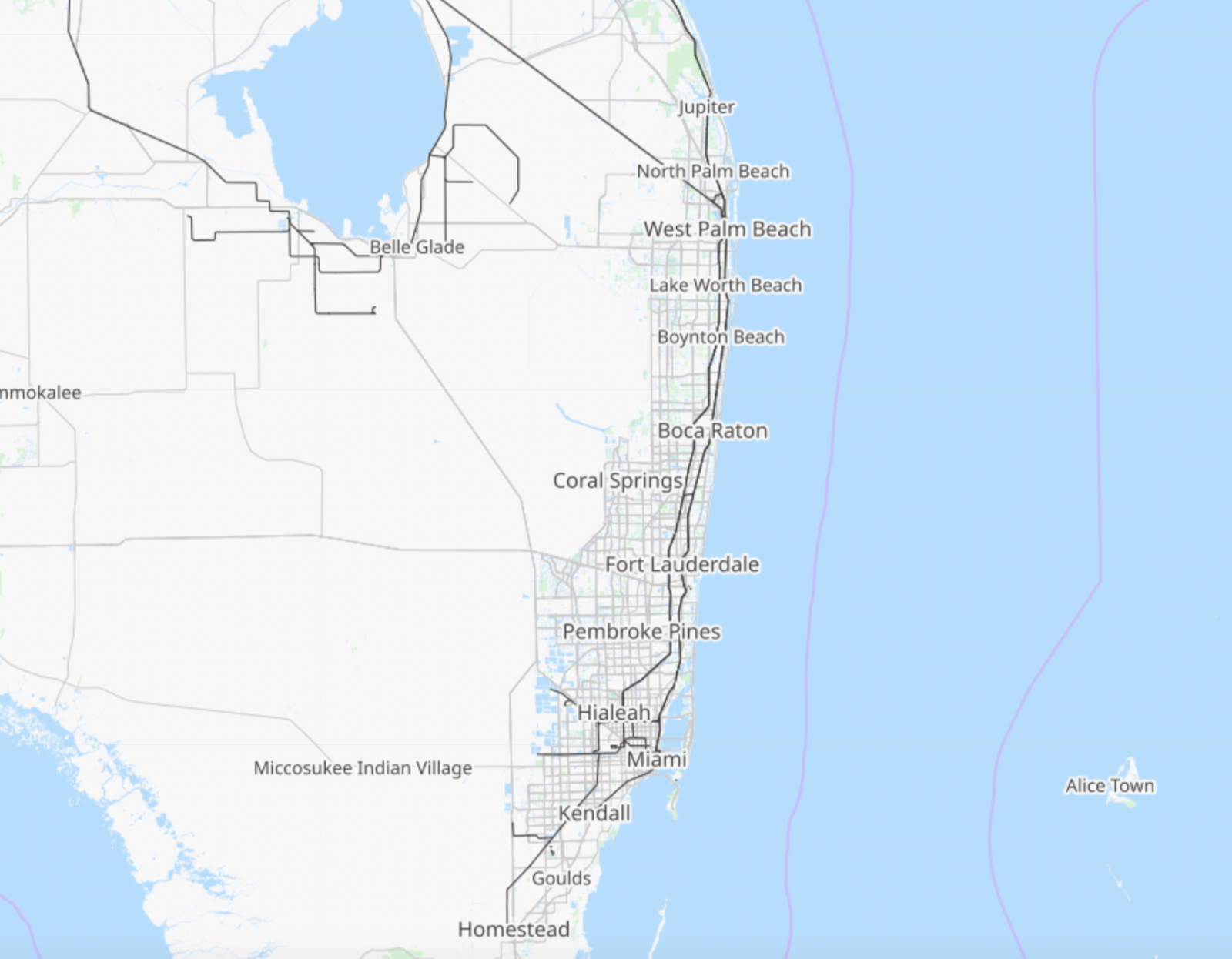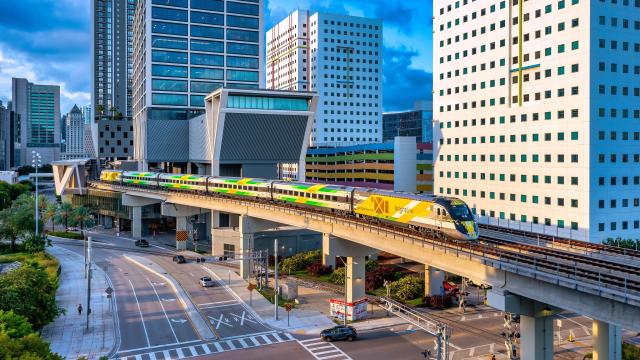Florida’s private owned Brightline passenger train pulled a test engine into its new terminal station at Orlando International Airport on Tuesday. The train line has been growing by leaps and bounds, but there’s just one problem: It’s the deadliest train line in America by far.
While there are train lines with higher body counts, Brightline is number one in deaths per miles travelled. For every 37,000 miles travelled by a Brightline train, there’s a fatality. The next deadliest isn’t even close; CalTrain in San Francisco at one death per 168,981 km. Since it began operating in 2018, at least 68 people have lost their lives, and that’s with a 19-month closure due to COVID-19.
It seems every month brings a new tragedy. In April, a driver died in a crash in Pompano Beach. Two weeks later, another was killed in a crash in Hollywood. In just three months after Brightline resumed service following COVID-19 lockdowns, 11 cars crashed into trains, the Palm Beach Post reports.
So what’s going on? Why is this train line so deadly? Brightline told NPR it chalked up 75 per cent of the deaths on suicide, which is an unimaginably high number. Outside railway experts told the Miami Herald earlier this year that the problem lies with Floridians:
Outside railroad experts say there’s one key reason for the high number of rail fatalities on Brightline’s tracks: An express train service runs through a dense urban area where the residents are not yet used to it and the potential fatal risks. “This is no different than Amtrak trains passing through Chicago suburbs or ones that go from L.A. to San Diego,” said Ian Savage, a professor at Northwestern University and director of its transportation and logistics program. “But here, you’ve got passenger service where you haven’t had passenger service before.”
When you’re seeing this level of death and destruction though, the smart money is on poor infrastructure design. The railway Brightline operates on, the Florida East Coast Railway, is uniquely positioned to simply be terrible for this kind of transit.
To see the problem, you only need to compare the number of grade (or street level) crossings on the FEC to the tracks used by Brightline to those of say, CalTrain, the next deadliest per mile train line. According to CalTrain, its railway crosses 41 grade crossings on 124 km of track. The portion of the FEC that Brightline uses meanwhile 178 rail crossings and 108 km, four times the amount as the next deadliest train line in 16 km less of track.
When the Florida East Coast Railway first reached Miami in April 1896, all of 444 people lived within “city” limits. The now densely populated “Treasure Coast” of Southern Florida grew up around these tracks. Henry Flagler, owner of the FEC, invested so much into stretching his rail line to this podunk town he began also investing in the land around his railway, according to the city’s history:
Along with the railroad, Flagler financed and built streets, water and power systems and a resort hotel. Canals were made to drain water from the everglades that covered a majority of the land. It was no surprise that Miami soon became an instant tourist attraction and retreat for the rich and famous. This prompted the first of many real estate booms.
The area boomed with railroad baron investments. By 1920, a single track was deemed insufficient and another line was ran down the coast. You can see civilisation in Southern Florida is particularly congested around the FEC:

Before Brightline even began operating, the FEC was considered one of the most dangerous tracks in America for decades. The frequency and speed of the passenger trains however pose an even greater risk to the people of Southern Florida. Despite multiple federal reports about the dangers of these tracks, Brightline travels through this densely populated area at a top speed of 127 km per hour, similar to an Amtrack. There’s a plan to soon reach even higher speeds in something the FRA is calling “higher speed rail.”
Brightline knew back in 2014 that operating on the FEC would require additional safety measures, which the company did not initially follow. A report from the Federal Railroad Administration report called trespassing on tracks (any crossing not made at a designated pedestrian area) “epidemic.” From the Florida Bulldog:
Brightline’s then-owners had rejected recommendations by the Federal Railroad Administration (FRA) to beef up safety features at planned rail crossings in northern Palm Beach County, where the train was proposed to run in speeds in excess of 129 km per hour. Also rejected were additional safety measures, including new gates and signs at pedestrian crossings throughout Miami-Dade, Broward and Palm Beach counties.
Recommendations included sealed corridors at 31 crossings in South Florida, which block cars and people from entering the tracks. The use of completely fenced bridges and underpasses were also recommended. The same treatment was urged for Phase 2 from North Palm Beach to Orlando.
The report’s author, engineer Frank A. Frey, said, “The company was not exercising appropriate safety practices and reasonable care when designing for high speed passenger rail service.” He added that the company felt such measures would be cost prohibitive.
Since that time, Brightline agreed to include the engineer’s recommendations into Phase 2 of the project that runs from West Palm Beach to Orlando.
Eventually, those safety recommendations were folded in to phase 2 of Brightline’s development. The alarms bells were rung again on railway safety in general in the state in a report commissioned in 2018, and yet nothing was done. From the Miami Herald:
Local, state and federal elected officials and regulators appear to be playing catch-up to the deadly rail dilemma and how to address it. A report from a consultant hired by state officials in 2018 recommended several key rail safety measures, yet to date despite the increasing number of train-related deaths, the Florida Department of Transportation has not implemented any of them. And in 2020, state legislation that would have bolstered public safety at rail crossings stalled.
Brightline’s approach to the deaths (besides blaming the majority of them on suicides) has been an aggressive safety and public awareness campaign, as well as asking for federal money to update crossings and fence in areas where people are known to trespass on tracks. But there’s only so much design can do when the inherent nature of the area is so hazardous for an 129 km/h train to operate. It may just be that public transit is too crucial to public safety to be privatised.
The FRA will hold a town hall meeting with stakeholders this month regarding the safety measures needed on the FEC. The Orlando station should open sometime in 2023, with plans for a stretch between Los Angeles and Las Vegas called Brightline West coming around in a few years.
